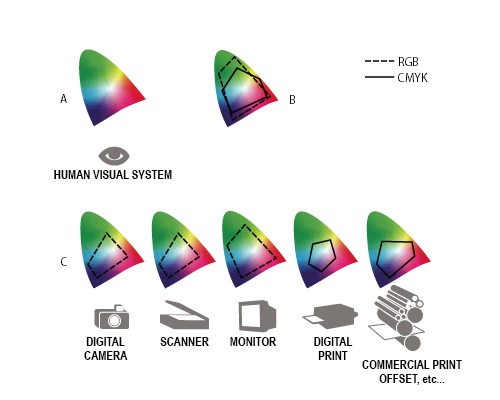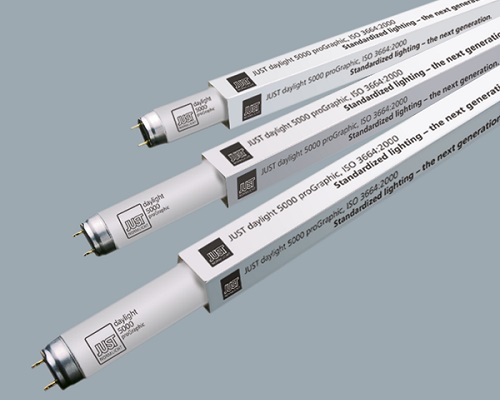Well it is always going to be debatable as utopia is described in one dictionary as 'an ideal place or state'.
Achieving colour management (CM) utopia may seem like an unreachable goal and there are production constraints that we all have to deal with. Perfection in colour may not be entirely possible but the effort put forth will soon see a reduction in the variables to a smoother and predictable colour workflow.
When dealing with input and output devices like digital cameras, scanners, monitors and 'printers' you need to learn as much as possible about each device (the hardware and software) and take control - if you don't control the colour it will control you! And YOU cannot CONTROL WHAT YOU don't MEASURE!
Three Key Points - If it is measurable, then your aim is to get the device into an optimal and repeatable state. And then, that should be quantifiable.
Where to Start to Reduce the Variables?
The most often overlooked device in your workflow will be your monitor or display. With monitors we always say that you get what you pay for! (Do photographers buy cheap lenses?) The monitor is your 'aperture' to your digital workflow. Careful investment in a uniform, hardware calibration display, with a hood, will enable you to maximise the use of CM.
Soft proofing is not new, but when it is done with care, and correctly, it can save you countless production hours and wasted prints because of bad colour! Colour management is an enabling technology! We would recommend an EIZO monitor because of their reliability, high quality and long warranty. The CG series comes with Color Navigator (CN) software for precise calibration - a CG model with the built in colorimeter would be my preference.
Also CN allows you run a validation routine to confirm the colour accuracy - an excellent feature and benefit! An important point - for visual confirmation of accurate and predictable softproofing set up requires an ISO 3664:2009 viewing system with a dimmer, but more on that later.
Next... The monitor will only be as good as the software design and production suite you are using. Soft proofing requires the correct colour settings and the settings you use should be correct for your type of work, type of print and for the region you are in. The Adobe Suite can be considered the industry standard, but when installed the colour settings are set up the North American Prepress defaults which may not be applicable if you are printing to ISO or G7.
Using the correct settings within your design and production applications (PhotoShop, Illustrator, InDesign and Acrobat) will reduce the risk of costly re-editing. This will also provide validity to your soft proofing.

Then... Should you be working in RGB or CMYK? This is a big question! Many companies I work with are essentially print production facilities - no in house design, no image capture or content creation. They specify to receive only CMYK files (PDF usually) - any RGB content can mean the file is returned to the customer or source for CMYK conversion or the customer can accept the print production facilities default RGB-CMYK workflow conversion.
If your production or workflow allows you to utilise the RGB format then you should stick with this. Conversion to the required CMYK space can then completed at the last minute, when needed, just prior to print. Keeping images and files in RGB means you are keeping the full range of colour and tone - preserving the originally captured information.
What about the choice of RGB working space? Many photographers swear by Adobe RGB or even ProPhoto RGB. Print technology is now improving at a great rate with increased CMYK and expanded gamuts becoming the flavour of the day.
However there will usually be some gamut compression (reduction in chroma), even clipping, when converting to a 'print' gamut. It is important to have the right skills and knowledge about the RGB-CMYK conversion options, rendering intents. Test, test, check and re-check to validate and confirm your settings are right for the type of work, workflow and type of print process. Reliable procedures will prove to be invaluable to visualise and assess image conversion quality.
And... Are you print buyer? Getting your print work out sourced? Many still like to have a good quality validation or guide print, even a 'proof'. We use the term proof with care as this can mean 'contract proof' with implications on colour verification, content, etc. Very popular today is the use of an aqueous inkjet printer to produce an accurate colour simulation 'proof' or validation print. It is possible to set up a profiled inkjet printer in house that can provide you with accurate simulation of your printed result.
Using a decent software RIP and spectrophotometer can provide you with the tools to produce an industry standard ISO or G7 proof, with certification.

We cannot cover everything about CM in a short a blog but to conclude... One of the most overlooked areas in any CM workflow is using the correct lighting for standardised viewing conditions - ISO 3664:2009 viewing conditions - the standard for photography, graphic arts and print.
As stated earlier you will need a suitable ISO 3364:2009 system for soft proofing - you could argue against it but its value to your visual assessment will prove immeasurable (pardon the pun!). For accurate visual assessment of guide prints, contract proofs and ANY print matter, an ISO 3664:2009 viewing system is non-negotiable!
Much of our consulting work covers the above with training and implementation of standards across multiple print devices and multiple sites.
To realise the full benefits of color quality management in print and using a colour spectrophotometer, please contact us at info@colourgraphicservices.com

